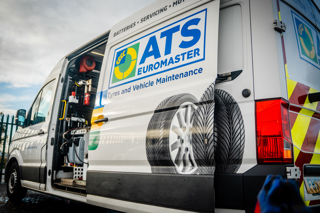Low mileage fleets could be seeing their company car whole life costs increase due to a move by some motor manufacturers to cut service intervals, according to Derwent Management Services (DMS).
For a number of years improved vehicle reliability alongside improvements to the ‘wear and tear’ of parts has meant many models are capable of running for typically two years/20,000 miles between service intervals.
That means that some low mileage company cars may only be serviced once or perhaps twice during their fleet life cycle, while high mileage company cars are typically serviced annually.
But DMS is alerting fleets to a possible trend to reduce service intervals following a recent move by the PSA Group - sister companies Peugeot and Citroen - to cut service intervals on a number of models from 24 months to 12 months and Renault undertook a similar move on its facelifte Megane, launched in 2012.
Steve Chambers, DMS research director, said: "We are perhaps witnessing the start of a more widespread move by some motor manufacturers to cut the time intervals between vehicle services, although mileage intervals seem to be remaining unchanged.
"On high mileage company cars there is likely to be little impact because if a vehicle’s service intervals was two years/20,000 miles and the car was clocking up 20,000 miles or more a year then it would be serviced annually.
"However, for fleets where company car mileage may be 12,000-15,000 miles a year reducing services intervals to one year, even if still linked to mileages of 18,000 or 20,000 miles, costs will inevitably rise.
“On an average contract of three years/60,000 miles it means an annual service, which could be one or perhaps two services more than previously, thus potentially adding a few hundred pounds to the SMR costs.
“We calculate that it adds a minimum of an extra service to vehicle wholelife costs at a cost of £100-200 depending on model.”
He said evidence from vehicle leasing companies and auction companies suggests that end-of-life vehicle mileage is reducing so it is likely that more company cars will require more frequent service intervals.
Chambers added: "We don’t believe there is any engineering reason for the reduction in mileage intervals. It may be that the increased focus on health and safety means that manufacturers want their franchise dealers to see their vehicles more frequently."
Sample indicative service costs calculated by DMS’s SMR Cost Analysis (ex VAT):
| SMR 3yr/12k miles per annum | 12-month intervals | 24-month intervals | Difference |
| Citroen C3 1.4 HDi VT | £808.58 | £664.46 | £144.12 |
| Citroen C3 Picasso 1.6 HDi 8v VTR+ | £917.63 | £745.56 | £172.07 |
| Peugeot 208 1.4 VTi Active | £865.59 | £732.22 | £133.37 |
| Peugeot 308 1.6 HDi 92 Access | £954.89 | £809.93 | £144.96 |





















T - 19/01/2013 10:38
A welcome step in the right direction. 20,000 miles p.a. is not the same as 20,000 miles over 3 years. Two years is too long between services: I'd say the ideal is one year or 20,000 miles, whichever comes first. A car that's been driven to station or shops and done 5,000 miles in a year needs a service probably even more than one that's done 20,000 in the year.